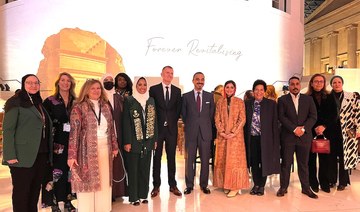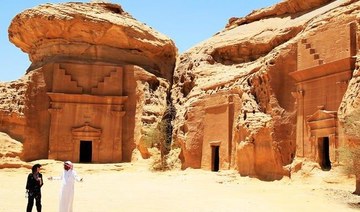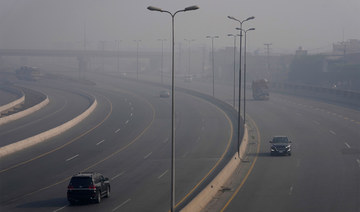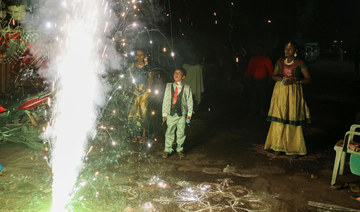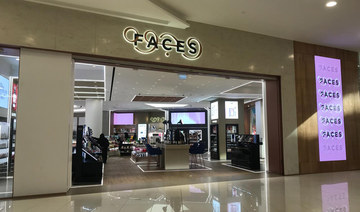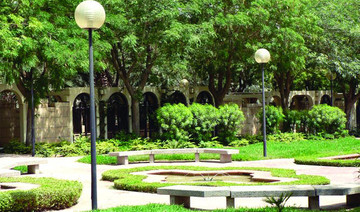Foreign diplomats based in Riyadh expressed awe and amazement at the wonders of the Madain Saleh during a recent tour organized by the Ministry of Foreign Affairs.
The two-day tour of the site in Ola Governorate in Madinah Region on Thursday was conducted to educate foreign envoys living here about the treasures of the Kingdom.
Alauddin Al-Askary, deputy foreign minister for protocol affairs, personally accompanied more than 100 diplomats and their families on a flight to Al-Ola airport.
The Prince Abdul Majeed bin Abdul Aziz Domestic Airport is located 25 kilometers, southeast of Al-Ula and the closest to the pre-Islamic archaeological site of Madain Saleh and Al-Ula heritage village.
Prince Sultan bin Salman bin Abdulaziz, President of Saudi Commission for Tourism and Antiquities met the diplomatic delegation and invited them to tour one of the most important heritage sites in the world. He said two new tourist sites — the historic site of Jeddah and rock paintings in Hail — would be registered with the United Nations Educational, Scientific, and Cultural Organization (UNESCO).
Madain Saleh dates back to the second century BC. It is the largest and best-preserved site of the Nabataean civilization south of Petra in Jordan and the first Saudi archaeological site to be included in UNESCO’s world heritage list.
The site is located 320 kilometers north of Madinah and covers an area of 15 sq. kilometers. It includes 111 tombs, of which most are adorned with decorative façades, cave drawings and pre-Nabataean inscriptions.
It boasts intricately designed water wells that serve as an example of Nabataean architectural and hydraulic genius.
The Nabataeans first inhabited the area in the second century BC, but their ancient civilization existed as far back as the eighth or seventh century BC in the countries of the Levant, including Lebanon, Syria and Jordan, and at times extending into the Sinai Peninsula in Egypt.
Originally nomads from the Arabian Peninsula, the Nabataeans were masters of trade, dominating the incense and spice routes of the pre-Islamic period. Their civilization collapsed in 106 AD at the hands of the Roman Empire.
Officials at Madain Saleh say visitors to the site reached 40,000 last year. They hope figures will double in 2012 as a result of the government relaxing entry restrictions.
Two museums exist on the site, including one devoted to the famous Hijaz railway, built by the Ottomans in the early 20th century, which ran from Damascus to Madinah and passed through Al-Hijr. The second museum traces the pilgrimage route to Islam’s holiest city of Makkah.
The area bears evidence of other ancient civilizations. Just 22 kilometers from Madain Saleh is Al-Ola, located on the ancient incense route. The city served as the capital of Lihyan, an ancient Arab Kingdom. It is home to archaeological remnants that date back thousands of years, including it’s citadel, which is 8,000 years old.
As they toured the site many diplomats shared their appreciation of the sights around them. Ambassador of Kuwait, Sheikh Thamer Bin Jaber Al-Ahmad Al-Sabah, thanked and praised the Kingdom for their protection of heritage sites, saying all citizens of Gulf Cooperation Council (GCC) States and Arab countries should be proud of the Kingdom’s efforts. “We should promote these sites globally and redouble our efforts to promoting our heritage. The Kingdom’s heritage is a source of pride for all GCC citizens.”
Sir John Jenkins, British ambassador, said the archaeological sites in Madain Saleh reflect the depth of civilization of the Arabian Peninsula. He praised the efforts of the Saudi Commission for Tourism and Antiquities in supporting heritage and maintaining the antiquities of the historical city.
Irish Ambassador Niall Holohan said the places he visited would certainly attract local and foreign tourists to the Kingdom.
Mexican Ambassador Arturo Trejo said the visit gave a deep insight into the rich history of the Kingdom.
Singapore Ambassador Wong Kwok Pun, who accompanied his wife on the tour, said they both enjoyed the visit and it gave them an eye-opening glance into the Kingdom’s rich history. “We will take good memories back to our country and tell our people about the rich heritage of this holy land,” he said.
Maldivian Ambassador Adam Hassan said the visit was a unique and wonderful experience and it is a “must” place for everyone to visit.
Besides the historical importance of Madain Saleh, Bangladesh Ambassador Mohammed Shahidul Islam said he and his fellow diplomats were taken by the traditional hospitality of the local people. “We were all well looked after and entertained by folk dances and cultural performances.” He said the tour was interesting and visitors to the city of archaeological wonders would return to the capital with an enhanced knowledge of Saudi history and a deep sense of satisfaction of a trip that will remain in their hearts forever.
Ambassadors call Madain Saleh an archaeological wonder
Ambassadors call Madain Saleh an archaeological wonder
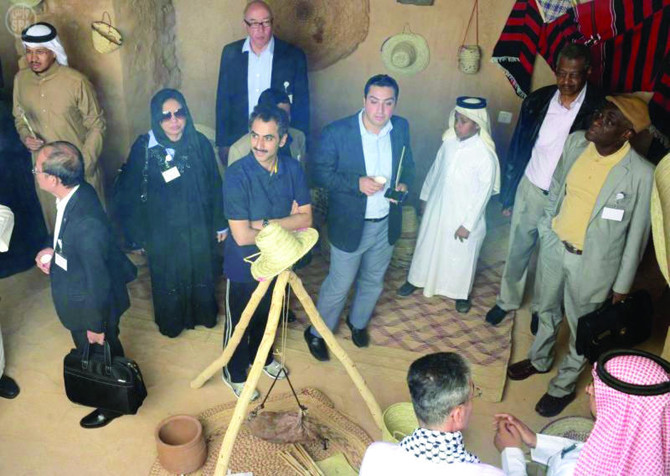
Eid escapes: A guide to relaxing holiday destinations in the Kingdom
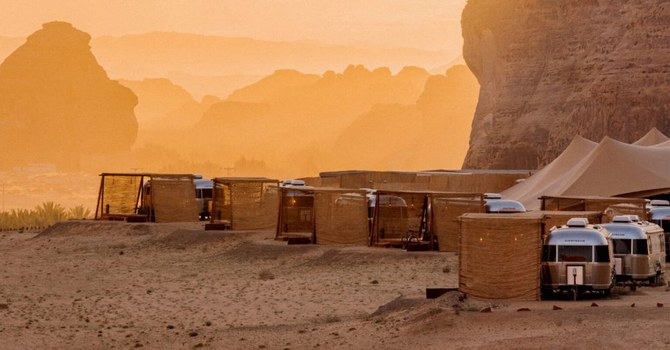
- Saudi Arabia’s diverse landscapes beckon adventurers to explore its natural wonders
- Saudi Arabia’s renowned tourism project, The Red Sea, is welcoming guests with the opening of The St. Regis Red Sea Resort
JEDDAH: After a month of worship, many people during Eid Al-Fitr break seek fun and relaxation. For those looking for a serene and rejuvenating destination, Saudi Arabia offers an array of options. From luxury resorts to sustainable desert getaways, the Kingdom provides diverse choices to suit all preferences.
Here is a curated list of destinations for a perfect Eid getaway.
The St. Regis Red Sea Resort
Saudi Arabia’s renowned tourism project, The Red Sea, is welcoming guests with the opening of The St. Regis Red Sea Resort. Situated on the Ummahat Islands in the Al-Wajh Lagoon, this luxurious resort features 90 beachfront and overwater villas, each boasting private pools and stunning views. Designed by architect Kengo Kuma, the resort’s aesthetic reflects the beauty of coral reefs and dunes. Guests can dine al fresco at five beachside venues and enjoy Japanese-inspired cuisine at Gishiki 45 and Tilina. The resort offers a spa, gym, and outdoor lap pool, all powered by renewable energy. Rates start from $1,866 per night.
Six Senses Southern Dunes
Nestled amid rolling dunes and the Hijaz Mountains, Six Senses Southern Dunes offers a unique retreat. With rooms, suites, and villas designed under tent-like roofs, the resort blends modern luxury with traditional charm. Guests can enjoy spacious accommodations with outdoor terraces and private pools. The resort’s spa spans 4,000 square feet and offers a range of treatments. Activities include cooking classes and fishing tours, and dining options cater to diverse palates. Rates start from SR4,380 ($1,168) for a Wadi King Room, with a commitment to sustainability.
AlUla: A haven of history and natural beauty
Located in the northwest of Saudi Arabia, AlUla is renowned for its rich history, stunning landscapes, and archaeological wonders. Home to UNESCO World Heritage Sites like the Nabatean tombs at Hegra and ancient rock art, AlUla offers visitors a glimpse into ancient civilizations. The region is undergoing extensive development to enhance its tourism infrastructure while preserving its cultural heritage and natural beauty.
Here are some top accommodations in AlUla for an unforgettable Eid escape experience:
Habitas AlUla: A sustainable desert resort offering luxury accommodations amid the desert canyons of the Ashar Valley, Habitas AlUla features 96 guest villas, each designed to blend seamlessly with the surrounding landscape. Guests can enjoy a range of facilities, including wellness centers, dining options, and a large infinity swimming pool.
Caravan by Habitas AlUla: Caravan provides a unique luxury camping experience in the picturesque Ashar Valley with exclusive Airstream trailers offering either an oasis or mountainous view. Each of the 22 deluxe trailers features panoramic views, air conditioning, WiFi, a queen-size bed (or two single beds), an indoor lounge, a kitchenette, and a private shower and bathroom. Prices range from SR1500 to SR2500 per night.
Ashar Tented Resort: Nestled amid the sweeping desert sands and rugged rock formations of the Ashar Valley, this luxury camping experience immerses guests in AlUla’s spectacular scenery. With access to five-star facilities at the neighboring Banyan Tree Hotel, guests can enjoy a comfortable and memorable stay.
Banyan Tree AlUla: Offering breathtaking views of the Ashar Valley, Banyan Tree AlUla features 47 elegant tented villas adorned with authentic Arabian-inspired details. Committed to sustainability and well-being, the resort advocates for environmental conservation and cultural preservation.
Whether you seek luxury, tranquility, or cultural immersion, AlUla offers a range of experiences to suit every traveler’s preference.
Explore the region’s rich history, breathtaking landscapes, and unparalleled hospitality for an unforgettable Eid getaway: www.experiencealula.com.
Adventures and sightseeing
Many seek the perfect getaway to unwind and connect with nature. In Saudi Arabia, adventure-seekers have a plethora of options thanks to the diverse terrains that span the Kingdom. From sandy deserts to rugged mountains and lush valleys, there is something for everyone to explore.
Guiding adventurers across the Kingdom
Saudi Trips, a leading adventure agency, offers a range of trips and hikes across the Kingdom. Founded by Ibrahim Saad, the agency aims to provide visitors with the best Eid experience, tailored to their preferences and budget.
Saad highlights some of the prime camping and hiking spots, including the iconic AlUla region, the mysterious Dark Cave in Tabuk, and the picturesque Wadi Al-Disah in Jazan.
“In my opinion, the best destinations during Eid break are the sandy areas, caves, and valleys,” Saad told Arab News. “Activities vary according to the terrain, including walking on the sand, mountain climbing, and descending.”
Other notable destinations Saad mentioned include Lajab Valley, the Caravans Trail along the Tuwaiq Mountains, Thumama, and Mount Qarah in the Eastern Province.
Happy escape
For those seeking a unique experience, Ahway, a Saudi tourism project, offers well-equipped caravans in scenic locations. Founded by Saeed Azhar, Ahway aims to promote local tourism while providing visitors with a chance to disconnect from city life and immerse themselves in nature. Starting in Taif, the project plans to expand to other regions like AlUla and Tabuk, offering guests a chance to explore Saudi Arabia’s stunning landscapes.
Diverse landscapes
Khalid Al-Rabiah, CEO of Ghamra Adventures Agency, spoke to Arab News about the allure of Saudi Arabia’s diverse landscapes during Eid.
“Being in a large city like Riyadh, the nearby areas, especially Thadiq National Park and the dunes and valleys of Rughabah Village, are considered prime destinations for Eid escape, especially with their unique nature and the presence of hiking trails and mountain ridges spanning over 70 km.
“There is also a growing trend of camping in the unique natural environments of Hail and Tabuk, known for their peculiar mountains with strange formations and golden sands.”
Ali Al-Abdali, a tour guide in Jazan, describes the region as a haven for hiking and wilderness enthusiasts not only for the Eid holiday but throughout the year.
From stunning beaches along the Red Sea to rugged mountains like Al-Ardah and Al-Rayth, Jazan offers diverse landscapes for outdoor activities.
As Eid approaches, Saudi Arabia’s natural attractions beckon adventurers, both local and international, to explore and create unforgettable memories amid breathtaking scenery.
Bulgaria, Romania take first steps into Europe’s visa-free zone

- New status will not apply to land routes, after Austria veto over fears of a potential influx of asylum seekers
- Schengen zone will now comprise 29 members, including 25 EU member states plus Switzerland, Norway, Iceland and Liechtenstein
BUCHAREST: Bulgaria and Romania joined Europe’s vast Schengen area of free movement on Sunday, opening up travel by air and sea without border checks after a 13-year wait.
A veto by Austria, however, means the new status will not apply to land routes, after Vienna expressed concerns over a potential influx of asylum seekers.
Despite the partial membership, the lifting of controls at the two countries’ air and sea borders is of significant symbolic value.
Admission to Schengen is an “important milestone” for Bulgaria and Romania, symbolizing a “question of dignity, of belonging to the European Union,” according to foreign policy analyst Stefan Popescu.
“Any Romanian who had to walk down a lane separate from other European citizens felt being treated differently,” he told AFP.
Ivan Petrov, a 35-year-old Bulgarian marketing executive who lives in France, said he was enthusiastic about less stressful traveling and the time he would be able to save.
“This is a great success for both countries, and a historic moment for the Schengen area — the largest area of free movement in the world,” EU chief Ursula von der Leyen said in a statement Saturday.
“Together, we are building a stronger, more united Europe for all our citizens.”
With Bulgaria and Romania arriving joining Sunday, the Schengen zone will comprise 29 members — 25 of the 27 European Union member states as well as Switzerland, Norway, Iceland and Liechtenstein.
Romania’s government said Schengen rules would apply to four sea ports and 17 airports, with the country’s Otopeni airport near the capital Bucharest serving as the biggest hub for Schengen flights.
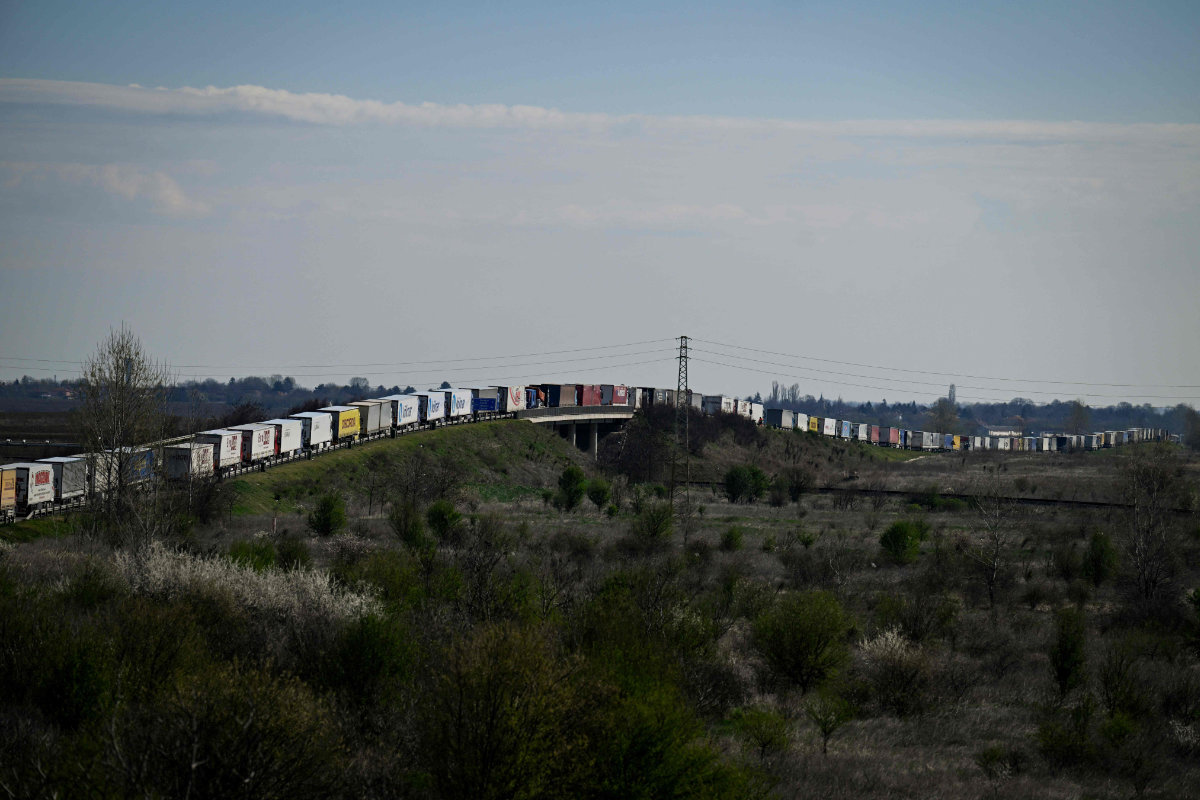
More staff including border police and immigration officers will be deployed to airports to “support passengers and detect those who want to take advantage to leave Romania illegally,” it added.
Random checks will also be carried out to catch people with false documents and to combat human trafficking.
Bulgaria and Romania both hope to fully integrate into Schengen by the end of the year, but Austria has so far relented only on air and sea routes.
Croatia, which joined the EU after Romania and Bulgaria, beat them to becoming Schengen’s 27th member in January 2023.
Created in 1985, the Schengen area allows more than 400 million people to travel freely without internal border controls.
While some have reason to celebrate, truck drivers, faced with endless queues at the borders with their European neighbors, feel left out.
Earlier this month, one of Romania’s main road transport unions the UNTRR called for “urgent measures” to get full Schengen integration, deploring the huge financial losses caused by the long waits.
“Romanian hauliers have lost billions of euros every year, just because of long waiting times at borders,” secretary general Radu Dinescu said.
According to the union, truckers usually wait eight to 16 hours at the border with Hungary, and from 20 to 30 hours at the Bulgarian border, with peaks of three days.
Bulgarian businesses have also voiced their anger over the slow progress.
“Only three percent of Bulgarian goods are transported by air and sea, the remaining 97 percent by land,” said Vasil Velev, president of the Bulgarian Industrial Capital Association (BICA).
“So we’re at three percent in Schengen and we don’t know when we’ll be there with the other 97 percent,” he told AFP.
Bucharest and Sofia have both said that there will be no going back.
“There is no doubt that this process is irreversible,” Romanian Interior Minister Catalin Predoiu said this month, adding it “must be completed by 2024 with the extension to land borders.”
Georgina Rodriguez, Cristiano Ronaldo explore Red Sea coast in Saudi Arabia

DUBAI: Football star Cristiano Ronaldo and his partner, Argentinian model Georgina Rodriguez, are on a mission to explore Saudi Arabia — their most recent excursion was a visit to the Kingdom’s coastline, which the model shared on social media.
“Love in paradise. We keep discovering Saudi Arabia,” Rodriguez posted from a Red Sea resort, while tagging @VisitSaudi, the official tourism account of Saudi Arabia. The photographs include shots of the couple and their children enjoying a day at the beach before posing for a photograph on an overwater deck.
The Al-Nassr footballer often uses his downtime to explore the country and was spotted in AlUla in December.
“Amazed by the extraordinary human and natural heritage of AlUla here in Saudi Arabia,” he wrote on Instagram at the time.
The couple enjoyed a romantic dinner and visited AlUla’s Maraya, a multi-purpose venue that holds the Guinness World Record as the largest mirrored building with 9,740 glass panels. It is located 12 km from Saudi Arabia’s first UNESCO World Heritage site, Hegra.
Rodriguez has also been enjoying Saudi Arabia’s social scene without her famous partner —earlier in March she was seen at an event hosted by Saudi perfume label Laverne in Riyadh.
The Netflix star, who has her own reality show titled “I Am Georgina,” took control of the brand’s Snapchat account, offering followers an exclusive glimpse into her experience at the event.
In March 2023, Rodriguez collaborated with the brand on a campaign — and she answers candid questions about her time in the Kingdom in the new clip.
“I feel very safe in this country and really appreciate its family values,” she said in the stylish video posted on social media at the time.
Thai tourist hotspot Chiang Mai tops world’s most polluted cities
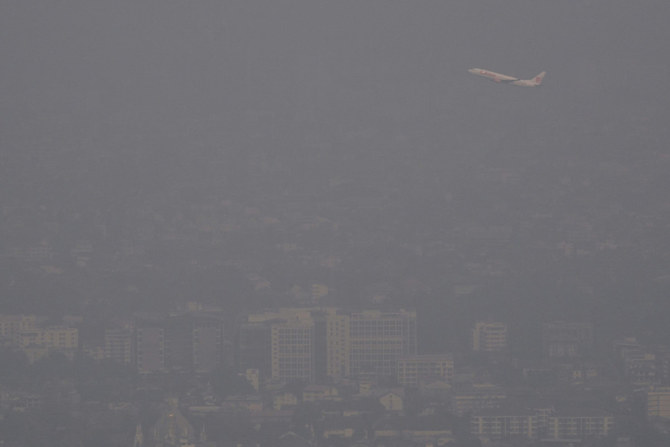
- High levels of pollution frequently hit Chiang Mai during the early months of the year when farmers often burn crops to clear land
- Located in the north, Thailand's second largest city has a population of 1.2 million people as of 2022
CHIANG MAI, Thailand: Thai tourist hotspot Chiang Mai was blanketed by hazy smog Friday, as residents and visitors to the usually picturesque northern city were left wheezing in the toxic air.
The country's second largest city topped air monitoring website IQAir’s table of the world’s most polluted cities early Friday.
Levels of PM2.5 pollutants — cancer-causing microparticles small enough to enter the bloodstream through the lungs — were classified as “very unhealthy” and hit more than 35 times the World Health Organization’s annual guideline.
“It’s very high. All I have is this mask which is the same one I used for Covid,” orange seller Kamol, 62, told AFP at the city’s Warorot Market.
Thailand’s former prime minister Thaksin Shinawatra, who was recently freed early from a jail sentence for graft and abuse of power following 15 years in self-exile, visited the market on Friday, donning a face mask while he posed for photos with well-wishers.
High levels of pollution frequently hit Thaksin’s hometown of Chiang Mai during the early months of the year when farmers often burn crops to clear land, and forest fires and exhaust fumes also add to the problem.
Rising awareness of the health implications has prompted some action from the government, with Prime Minister Srettha Thavisin’s cabinet approving a Clean Air Act to tackle the issue in January.
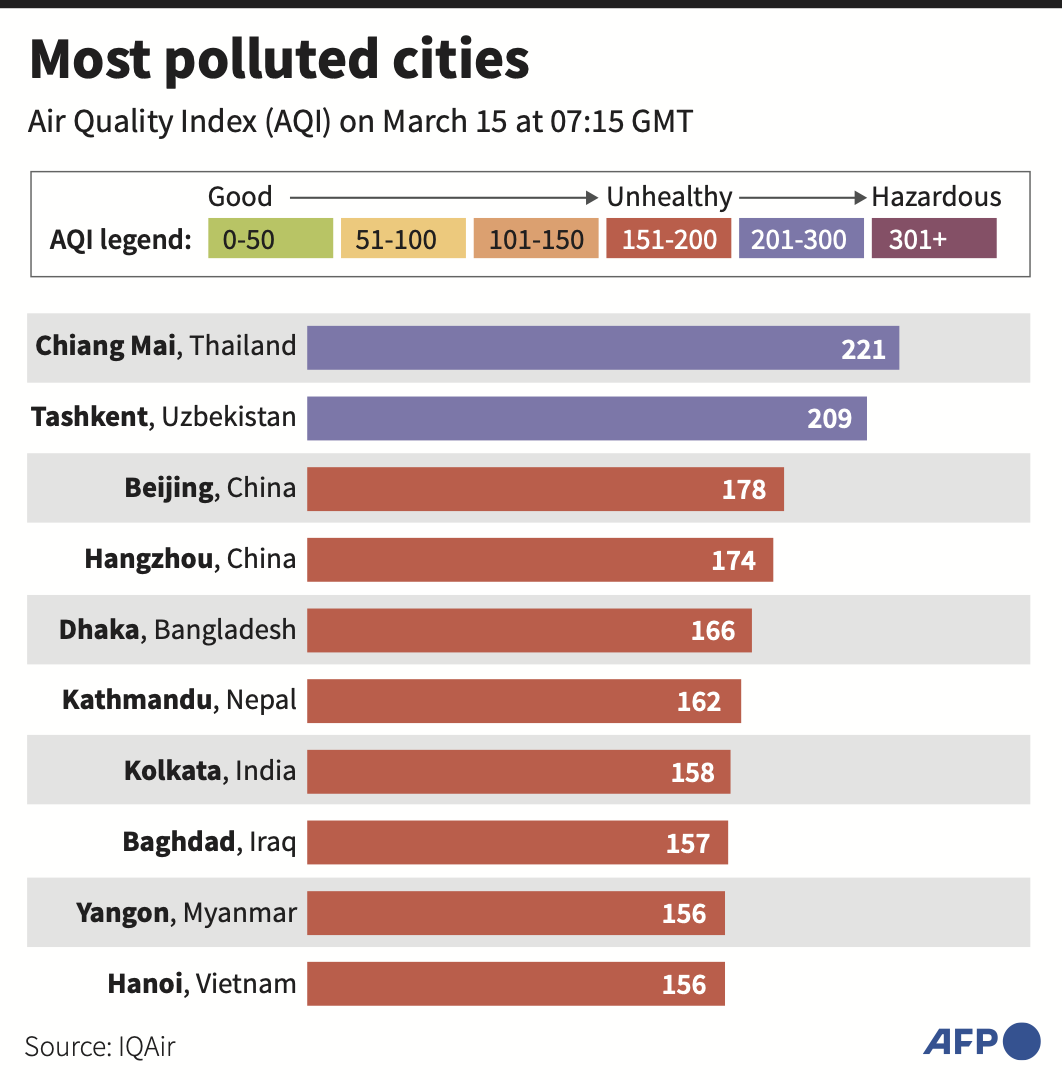
The premier is also due to visit later Friday and is expected to meet with organizations tackling forest fires on Saturday.
But Chiang Mai residents — like orange seller Kamol, who sighed and shook his head when asked — said they had received no help.
“I need to get my health checked every year, especially for respiratory diseases,” he said.
A government agency warned this month that more official action was needed, saying at least 10 million people required treatment for pollution-related health problems last year.
“The pollution is always high, especially this time of year,” said 50-year-old Sariya while shopping for groceries in Chiang Mai.
“There is nothing we can do about it since it’s always high.”
Sariya, who gave only one name, also said the city’s location — nestled between hills, trapping the toxic smog — made the situation worse.
But he was “more worried” about people living there with underlying health issues, adding: “We need to help ourselves.”
Last year, sky-rocketing levels of pollution saw international tourists discouraged from visiting, with vendors despairing for business, as the Thai Hotel Association Northern Chapter also warned domestic visitors were canceling bookings.
But in Chiang Mai on Friday, the streets were filled with ambling tourists who seemed unperturbed by the smog.
“I’m not afraid of the pollution,” said 32-year-old Chinese tourist Andy, visiting from Chengdu, who said his country also suffered from poor air pollution.
“I just enjoy the city because it’s very nice.”
French programmer Guillaume Tieufri, 44, said the pollution had not spoilt his four-day trip.
“You just have to go on and live your day.”
Work begins on Al-Urubah Park in Riyadh
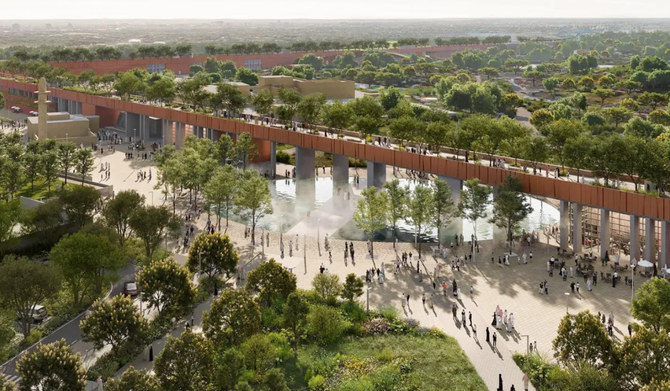
- More than 600,000 trees and shrubs will be planted, covering 65 percent of the park’s area
RIYADH: The Royal Commission for Riyadh City announced on Sunday that construction work had started on Al-Urubah Park, which will span 754,000 square meters.
The park’s location, at the intersection of Prince Turki bin Abdulaziz Road and Al-Urubah Road, will enable easy access from all parts of the city.
Al-Urubah Park will attempt to enhance quality of life by providing recreational spaces for residents and visitors, contributing to making Riyadh one of the most sustainable cities in the world.
This initiative is part of the Green Riyadh Project, one of the world’s most ambitious urban afforestation schemes, which aims to plant 7.5 million trees and increase vegetation cover to 9 percent of the city’s area.
The park will feature a 3 km panoramic path and a viewpoint showcasing the city’s landmarks. More than 600,000 trees and shrubs will be planted, covering 65 percent of the park’s area. Sports facilities throughout the park will cater to different age groups.
The design also incorporates modern technologies to showcase natural elements, offering visitors an interactive experience through augmented reality.
The unique garden design to international specifications was selected from among several ideas submitted by six contestants. The winning design concept achieves sustainability and conforms to environmental standards.
The Green Riyadh Project focuses on planting in residential neighborhoods, gardens, mosques, schools, government and public buildings, and parking spaces. In addition, a water network covering some 1,350 km is being created.







